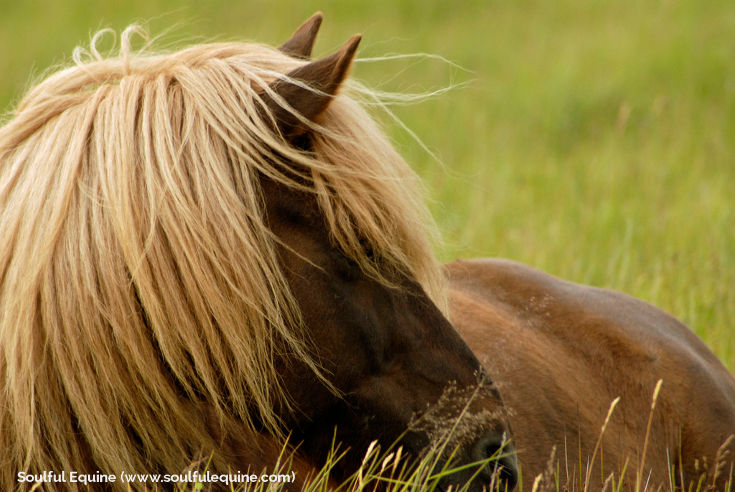
Ah, the beauty of spring. You probably feel much like I do when spring rolls around. It’s usually a beautiful and exciting time of the year that brings with it a feeling of new beginnings.
Since the weather is getting warmer, you start to gear up for riding and spending more quality time with your equine companion.
You notice the trees turning green and the pastures becoming abundant with fast growing spring grass, and you begin to think that you can now save money on hay and finally turn your horse out on pasture after a seemingly endless winter.
However, sometimes spring may cause the opposite feeling of what I described.
For most hoof care professionals and veterinarians, spring can be one of the busiest times of the year, and not because people are riding their horse and traveling more.
Why?
Because two of the leading causes of death in horses may surface most during the springtime.
Is That Lush Green Grass Worth It?
Last I checked, the two leading causes of death in horses are colic and laminitis.
Colic being #1 and laminitis #2 – of course, it’s not the laminitis that actually causes death. Instead it’s euthanasia, because the traditionally minded human is often not successful in rehabilitating a case of laminitis.
Although spring is an exciting time of the year, it can also bring its challenges when it comes to horses.
I have to admit that although I love the feeling of spring, this time of the year is difficult if you manage an equine partner who’s prone to getting laminitis.
You might wonder why I’d rather not have that lush, green, chemically treated pasture for grazing my horses. Here’s why – I used to think that lush, perfect, pasture was great, but I changed my mind about that in 2002, when one of my horses, Dillon, got laminitis.
He caused me to become seriously dedicated to educating myself about natural hoof care and learning more about what can affect a laminitis-prone horse, which I would like to stress was not an easy task.
I quickly found out that it was not all about the hoof, instead it was about understanding and applying natural horse care principles.
I’m still, to this day, tweaking his diet but I’m not the norm. Most people will not go above and beyond for their laminitic or foundered horse, and that’s one of the reasons that laminitis is the 2nd leading cause of death.
So far so good, Dillon now in his mid-twenties and doing great, and I’m successfully managing his health challenges. Actually, I think he looks and acts almost as good as he did 10 years ago.
He constantly keeps my young horse in line, and they have great, and sometimes intense, play sessions.
My desire to help Dillon forced me to dig deeper to understand what it takes to be successful with an insulin-resistant or laminitis-prone horse. I learned about different types of grasses, hays, the safest time to graze, what hays to avoid, what types of ingredients and supplements to stay away from and how to properly address his hoof care needs.
The list goes on and on and is never ending.
Think Prevention
What helped me understand Dillon’s condition tenfold is that my father was a type 2 diabetic. Most of my adult life, I’ve been on a quest to obtain optimal health and prevent disease. I learned about the causes of adult-onset diabetes and how to manage it and prevent it.
That knowledge easily transitioned to my horses.
I’ve also overcome many health problems throughout my life using diet and other alternative modalities where most people would resort to drugs or surgery instead.
I understand, and fully believe, that given the proper support, the body can heal itself without the use of toxic approaches that usually compromise the integrity of the body.
Having a horse that’s prone to laminitis can be a challenge when the lush green grass is abundant. Since Dillon’s episode, I’ve found strategies that work for my small herd and my situation.
Something I’ve noticed, however, is that other horse guardians don’t give the abundance of spring grass and its possible effects a second thought, especially if they don’t realize their horse may be a prime candidate for laminitis.
Most people find out too late and then they wonder what happened, why their horse coliced or why she got laminitis. The why is always asked after the fact versus understanding key concepts in prevention ahead of time.
Some people don’t know that their horse is a prime candidate for laminitis even though there are many early indicators.
Although I provide the best foundational nutrition to my horses, I approach each from a slightly different angle using natural horse care strategies. Each one is an individual and must be treated as such, not only from a behavioral standpoint, but from a nutritional standpoint as well.
Understanding the key concept of not treating all horses the same will reap a multitude of benefits for both you and your horse.”
Otherwise, you’ll wonder why one horse has a certain problem but another one doesn’t. I’ve personally observed this many times where someone attempts to apply a cookie-cutter approach to their horse care program.
When this happens, it’s a sure sign that they’re not reading the situation and approaching it based on an individual horse’s needs, which can vary depending on breed, metabolism, activity level, age and the condition of their health.
For example, you may have a competitive race horse who gets hard workouts daily, or your horse may just be an occasional or weekend athlete who experiences a lower level of stress and energy usage.
Another example, and a more challenging situation, may be a horse that is health-compromised and who requires additional support.
Each must be treated differently depending on many factors.
Domestication introduces challenges you must learn to overcome if you want your horse to thrive.
Implementing key natural horse care concepts into your program is no more difficult than what you may be doing right now.
It just takes a bit of a mind shift and behavior modification, which is not much different than what you would do in order to lose weight. Losing weight is not about the diet as much as it’s about your behavior, how you view food, your thought patterns and limiting beliefs.
Why is Spring Grass Harmful?
It’s not the spring grass that’s so harmful – unless it’s consistently treated with chemical fertilizers. Usually what’s more harmful is the horse guardian not understanding some basics of transitioning a horse onto spring grass.
There are many factors to consider depending on what part of the country you live in, what type of grass grows in your area in the spring, your horse and your situation.
In order to avoid a possible episode of colic or laminitis, it’s important to understand some fundamental horse keeping concepts.
In a nutshell, it’s important to know how to safely transition your horse onto pasture. If she’s used to a hay only diet, then a gradual transition is essential in order to avoid possible problems with colic or laminitis.
Again, it depends on your situation and on your horse.
If your horse is prone to laminitis, your best option may be to keep her off spring grass all together.
There’s a lot to cover on this subject, and I hope you’ll join me for the second part of this series where I’ll share with you more in depth information.
Keep it soulful,
Stephanie Krahl
####
Photo credit – original photo modified in size and to include the Soulful Equine name and URL
